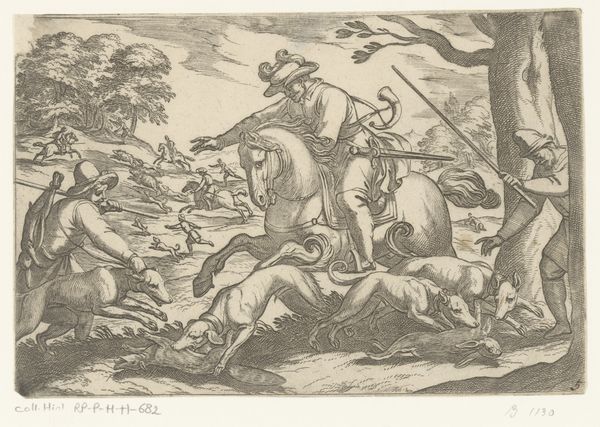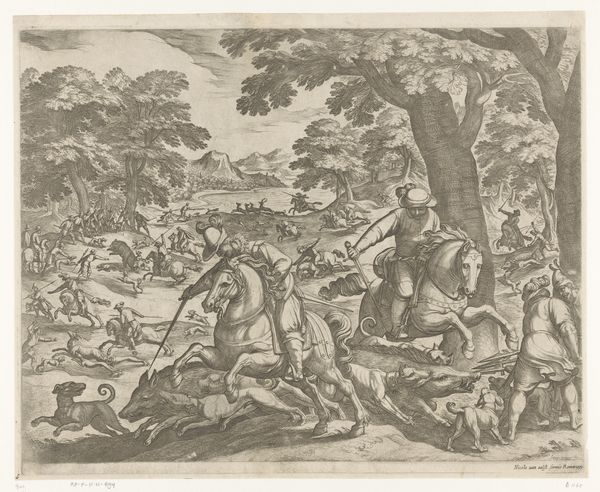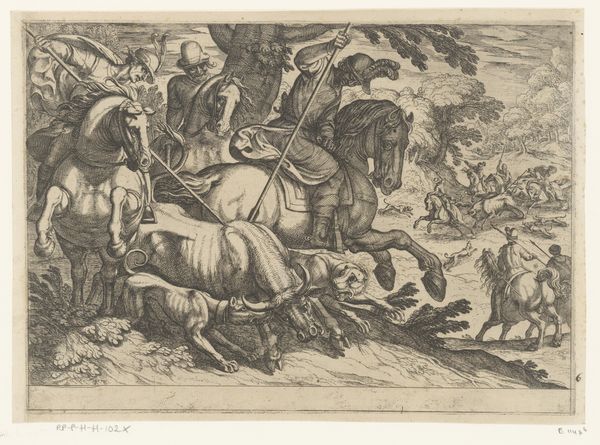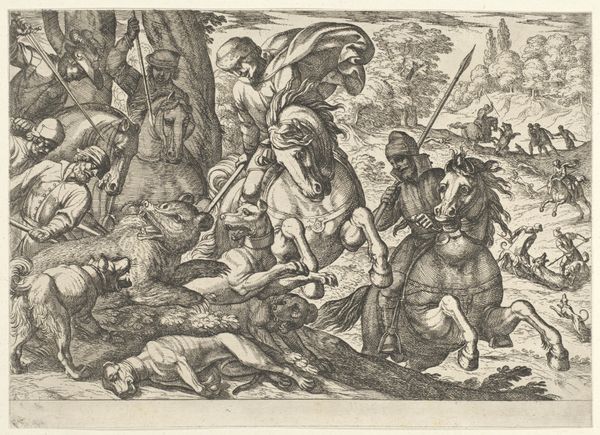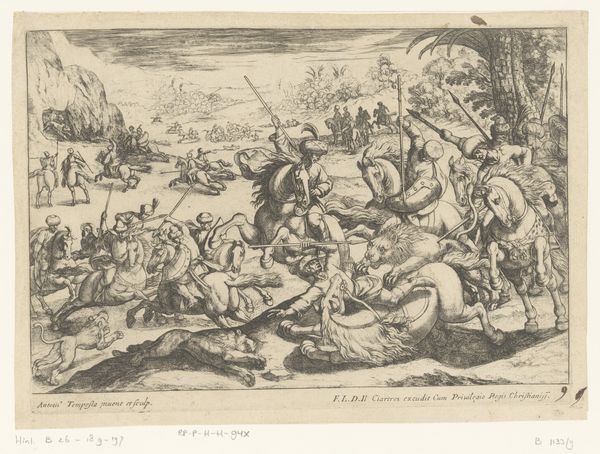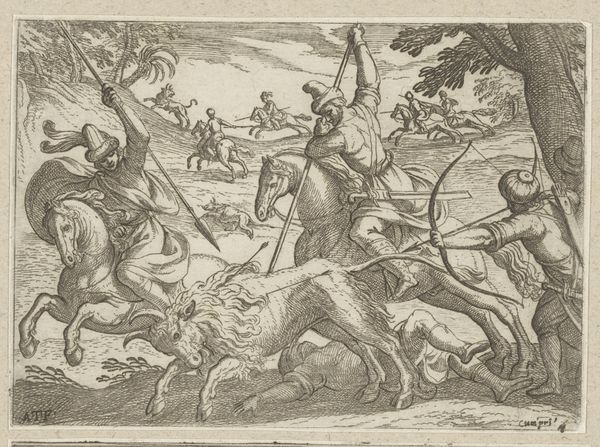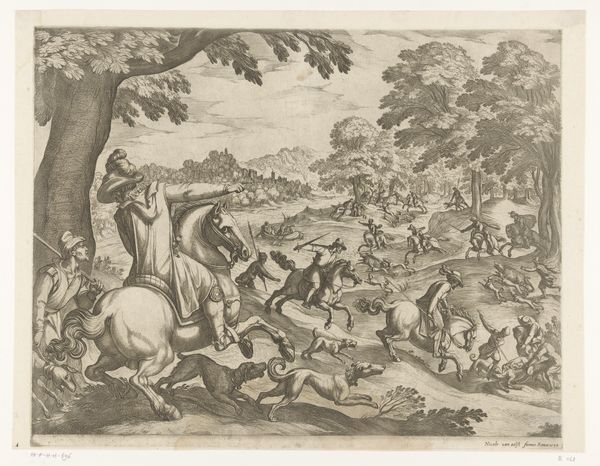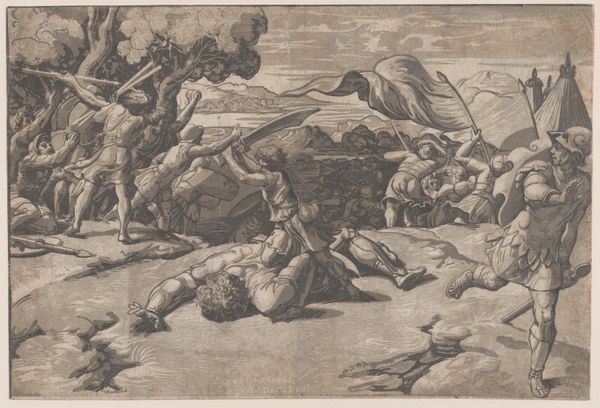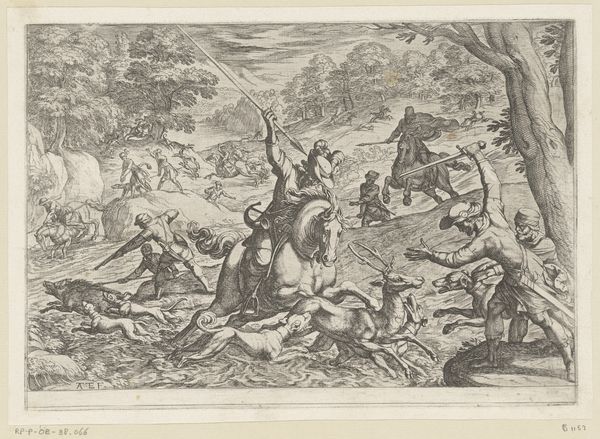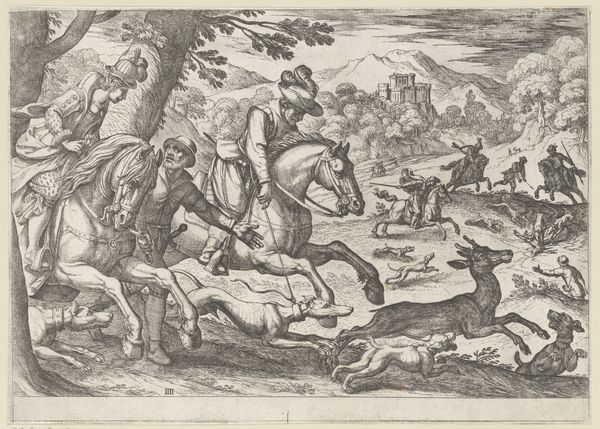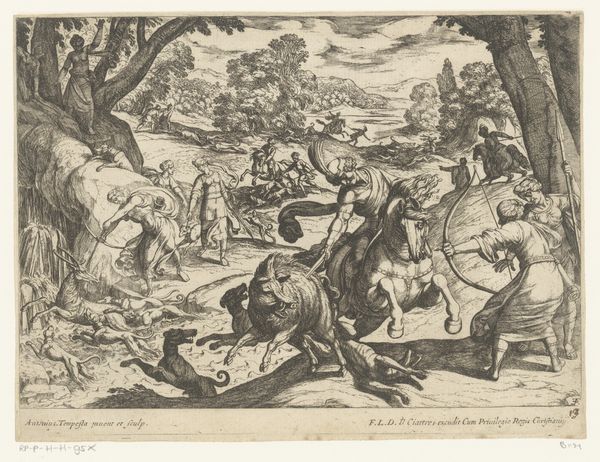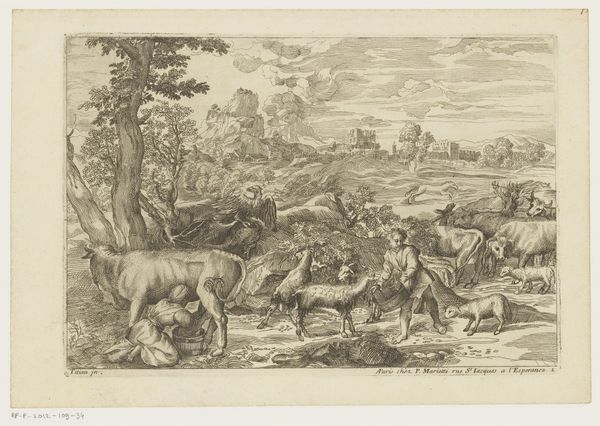
print, engraving
#
baroque
# print
#
pen sketch
#
landscape
#
figuration
#
genre-painting
#
history-painting
#
engraving
Dimensions: height 202 mm, width 284 mm
Copyright: Rijks Museum: Open Domain
Curator: This energetic print, "Hunt for Boar and Wolves", was created around 1609 by Antonio Tempesta. You can find it here at the Rijksmuseum. Editor: It’s quite a frenetic scene. So much frantic movement, with very dramatic dark and light contrasts. My eye bounces all over the place. Curator: Tempesta certainly captured a sense of dynamic action. Consider the compositional strategy: he organizes the figures and landscape elements in a way that channels the viewer's eye from the foreground melee toward the receding, densely populated background. Editor: And populated it is. What can we infer about the cultural significance of the hunting scene depicted? Was it a sport, a necessity, or something more symbolic? Curator: Well, group hunts like this had multifaceted meanings during the Baroque era. Yes, it provided food. Hunting was also seen as a martial exercise, reinforcing social hierarchies and demonstrating noble virtue. The sheer number of participants points towards a communal event that had political undertones as well as practical purposes. Editor: I am struck by Tempesta's technique here. There's an undeniable rawness in the linework. Notice, especially, the figures contorted poses— they almost appear caught mid-shout in a theatre of tension and action. Curator: The engravings’ density indeed creates a certain atmospheric tension, reflecting the dramatic flair characteristic of Baroque art. Notice the details, how Tempesta has used line weight and density to suggest form and texture from the furry dogs to the bristled hides of the boar. It lends a textural depth despite its being a two-dimensional medium. Editor: These figures and beasts look as though they might at any moment escape the picture plane, fueled by bloodlust and survival instinct, transcending the boundaries between observer and observed. Curator: Exactly, it makes us question not just the technical artistry but how prints contributed towards disseminating ideas about class, power and man's place in nature. Editor: Analyzing its form, it feels very immediate, chaotic. Whereas considered through its history, you begin to notice the patterns and structures propping it up. Curator: Precisely, I find it interesting how those layers inform and then enrich our present interaction with such an artefact.
Comments
No comments
Be the first to comment and join the conversation on the ultimate creative platform.
